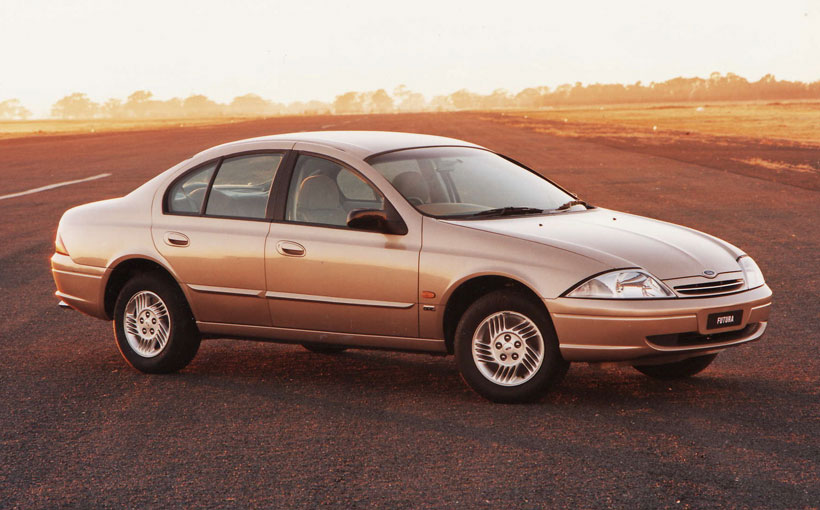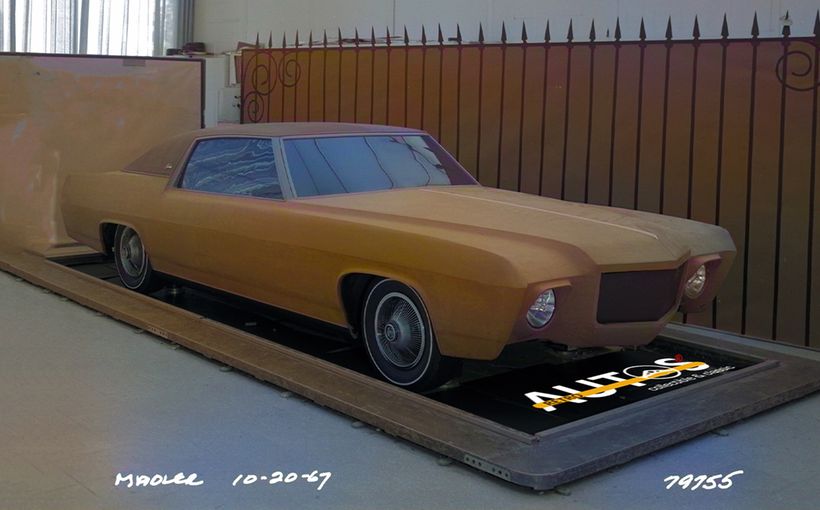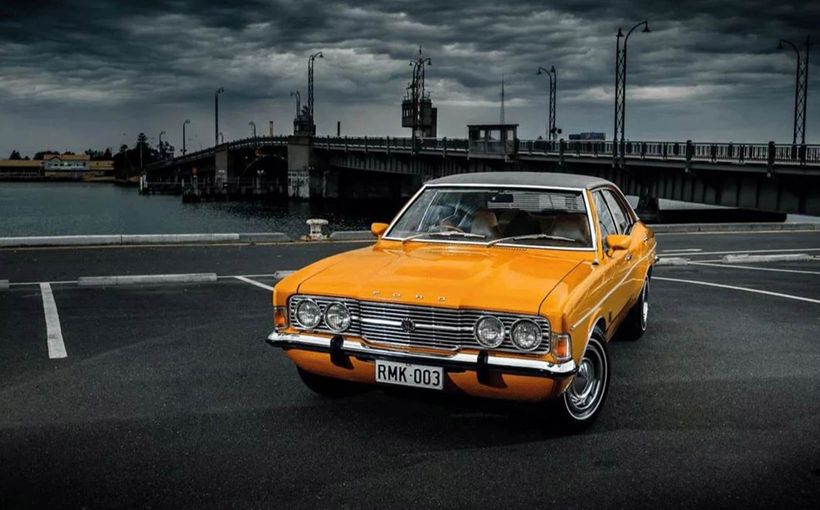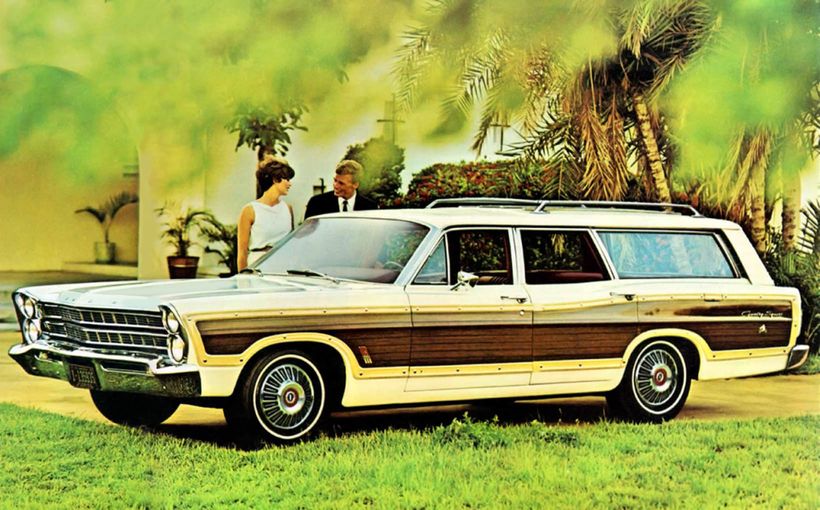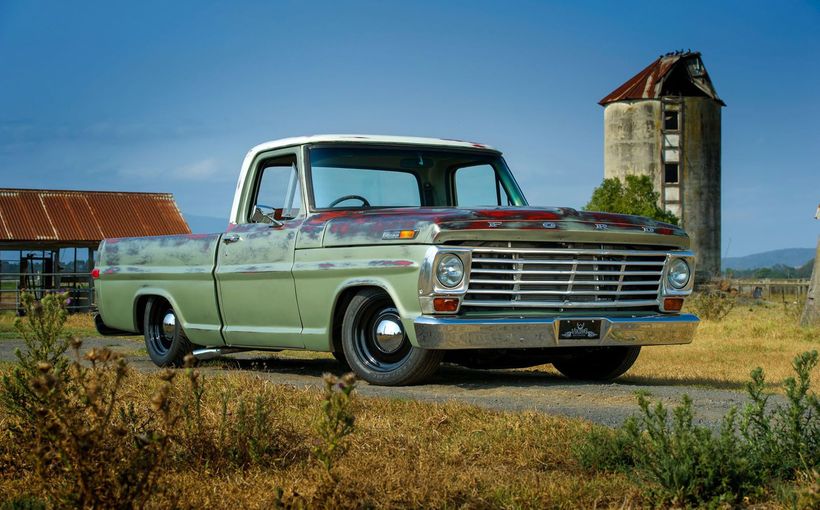1998-2002 Ford AU Falcon: Sunk by Identity Crisis or Dirty Tricks?

The September 1998 launch of the AU Falcon marked a bigger generational change than either the XD or EA. It introduced several firsts for an all-Australian design including double-wishbone independent rear suspension and variable camshaft timing. Its benchmark Cd of 0.295 and distinctive new looks had Holden worried about its new VT Commodore looking like yesterday’s car. Then it suddenly turned sour for Ford’s new model and would stay that way for another four years.
What turned the tide? From outside the industry, no single factor explains why it was so sudden. From the inside, there were two that started it. The initial reception was exactly what Ford needed for such an important new model. Wheels, October 1998: “By any objective measure, the AU Falcon is, at first acquaintance, a world-class car with remarkably few compromises. Australia’s once unfashionable and uncompetitive car industry has again proven that with the right support it can do more with less.”
The AU took its first heavy hit before it even reached the roads. Set to be the unrivalled star of the 1998 Sydney Motor Show for its public debut, the AU emerged with more than a few dents and scratches.

A small team inside Holden had developed a Coupe concept based on the VT Commodore so secretively that few of Holden’s management team even knew. It was such a huge surprise hit on the Holden stand at the same Sydney Motor Show, the media scrum could hardly take their eyes off it. The brand new AU range was not only met with relative indifference, it was bumped off the front pages nationally.
Although the new Holden coupe would take over three years to reach the showrooms as a Monaro, it made its sedan stablemates look right and the AU Falcon look wrong, in an instant. The second generation Opel Omega on which the VT Commodore was based had been around since 1993. By global standards, the VT shape was already half way through its life when it first appeared in Australia. The Coupe gave it a new energy.
Yet the AU Falcon was still generating enough excitement in some quarters with its new Lincoln-style waterfall grille (since known as the “paper shredder”) and next generation styling for Holden not to leave anything to chance.
Holden commissioned a training video for their sales network. It was one of the most systematic, single-minded and detailed attacks on a rival model you could imagine. On the nasty scale, it rated just under a 10.
For the well-informed, its emphasis said more about the VT Commodore’s weaknesses. For those captivated by its sophisticated presentation and relentless anti-Falcon attack, it generated a whispers campaign that rippled through the community at a level not seen since the Leyland P76.
Within months, commentators and opinion leaders who had earlier praised the car suddenly found fault with the AU Forte’s waterfall grille, its ride height, its narrow boot opening and rear door access, its overall appearance, its droopy rear styling, its lower spec live axle rear suspension, its stark interior and less “substantial styling.”

This didn’t suddenly bubble up overnight. These areas were targeted by a highly-motivated national Holden team of fleet and retail sales people in every corner of Australia who, with a “nudge, nudge, wink, wink”, could now tell anyone who listened why the AU was a flawed design with authoritative detail. It worked.
Not even the Ford camp knew. Most still don’t to this day. This writer was lent a copy of this tape by someone who felt it did a better job of undermining the local industry than addressing the growing import threat. Few members of the media and the public still have little idea of what was driving this sudden groundswell of rejection of a new model that only several months earlier looked unstoppable.

Why the AU Scared Holden
- Before the AU was even conceived, the Falcon was to be scrapped under Jac Nasser’s three year plan for Ford to pull out of Australia and replace it with the Taurus. This created the first delay.
- Nasser’s replacement, John Ogden, successfully argued that a large front drive Ford (he proved correct) would fail in Australia and won approval for the original AU, known as EA169 (the actual EA Falcon was EA26). By 1994, it had been approved and was underway with a budget of up to a billion dollars.
- In compliance with Alex Trotman’s new Ford 2000 plan for global models to cover the same segments in all markets, the EA169 project was suspended later in 1994, losing a critical three months while the local Ford team under John Ogden, prepared an all new case to justify reviving EA169. This included looking at the Taurus, Scorpio (Europe’s Granada replacement) and the US Crown Victoria. The local team was successful, not long after the new Ford Ka previewed Ford’s New Edge design.

- The earlier Mondeo-like EA169 proposals were immediately scrapped. New Edge and Taurus influences were fused into a new approach after the VT’s Omega starting-point was already on the market. The intent was to deliver a much sleeker and more compact-looking shape despite the Falcon’s tall inline six. The base of the windscreen was moved forward by 40mm, the rear raised by 45mm while the length and front overhang were cut.
- Many hours in the wind tunnel then finessed the radical rear treatment and controversial pinched-in rear. The Ford smoke and mirrors machine tried to sell this as making the car look smaller and more appealing to women. The AU product team is adamant that this streamlining, along with a 50kg weight reduction, was driven by efficiency and the European trend to make cars look smaller and lighter. Highway economy was exceptional for such a big six.
- Unlike Holden which dropped the VT ride height as low as it dared, Ford maintained its stringent internal front and rear clearance requirements. Holden knew the VT’s low slung body work and fuel tank were vulnerable in serious Australian conditions making it imperative to undermine Ford’s higher stance and clearances.
- The big headlights were driven entirely by the demands of Australian rural drivers not impressed by the outgoing EL headlights nor those of its Commodore rival. The challenge was to integrate the large lens and reflector size into the styling. The last minute addition of front wheelarch flares moderated their visual impact slightly. Holden had to divert attention from the VT’s older, bulkier and less slippery three box styling, its inferior headlight performance and vulnerable low hanging bits. Holden’s below the line suggestions that the Falcon looked awkward sitting so high, the tapering rear end looked weak and sad and the goggle-eyed front looked plain weird, worked.

- The airy and spacious-feeling base Falcon dash highlighted the AU’s increase in cabin space compared to Holden’s more closed-in cockpit-like feel. Nor could Holden match the premium dash exclusive to upper AU levels. Holden cleverly turned this around by suggesting that all Commodore buyers were treated equally inside and played on the Forte’s much cheaper looking dash. Not long after the AU Forte’s dash design was praised as smooth and fresh, the centre control panel was compared to a “monkey’s bum.”
-
The AU Falcon’s folding rear seat was seen as a clincher for some buyers. Holden cleverly highlighted the AU’s inferior boot width and narrow load aperture generated by the streamlined rear, landing a second blow on the AU’s droopy rear styling.
-
The AU roofline was closer to a four door coupe (as evidenced by later Mercedes-Benz designs) when combined with a lower ride height. With some justification, Holden was able to discredit this entire approach with its restricted rear access and head-cracking front-door profile. The odd roof peak above the AU centre pillars where the height was least needed supported Holden’s case.
-
Holden engineers who cared could be sensitive about the deletion of Opel’s control links from the semi-trailing arm rear suspension to cut the cost for its standard fitment across the VT Commodore passenger car range. Ford engineers had trialled this system and rejected it as unacceptable with its lack of camber and toe control and its accelerated tyre wear.

- The base Falcon’s live rear axle, with the EL’s revised roll centre, became a Holden target as primitive when in fact it was far more suitable for towing and heavy loads. The wagon copped it even harder from Holden with its leaf spring rear. The process successfully neutered Ford’s superior double wishbone independent rear suspension unmatched at any Holden level as most Australians were not interested in confronting the nuances of three suspension systems in the same model. Ford ultimately had the last laugh after big fleets ditched the Commodore wagon because of its poor camber and toe control, lack of adjustment and excessive tyre wear. Ford had to rush a BA version of the AU wagon into production after the Territory was set to replace it.

- Ford’s massive new aluminium cross-member plus an almost brand new structure along with the heavily revised double-wishbone front suspension (forged alloy upper wishbones, stiffer hub-carrier) delivered a much tougher car than the VT Commodore. A 17 per cent boost in torsional rigidity and 13.8 per cent extra bending stiffness contrasted with the VT’s sometimes creaky stretched Opel body. Again, by highlighting the Ford’s utilitarian high rider look on the road, Holden deflected the issue.

- Ford’s new AU engines were massively improved in strength and refinement after a $50 million engineering program. It maintained 17 per cent extra torque at lower revs (157kW/357Nm) compared to the base VT Commodore (147kw/304Nm) as well as superior power and torque peaks. There was a special XR6 version (164kW/366Nm) and two versions of the VCT – 168kW/370Nm for the Fairmont Ghia, 172kW/374Nm for the XR6 VCT. Again, too complicated for the average buyer to comprehend and easily neutralized by Holden at base level by highlighting the base Commodore’s V6 performance and economy.
- The different styling for the XR models and the race cars also gave Holden a free kick. Base Commodore buyers could readily identify the hero SS and V8 Supercar DNA in their VT Executives. There was no obvious frontal styling relationship between the mainstream AU Falcon range and the XR hero cars and V8 Supercar. The unique AU styling shared by the XR models and race cars was more successful in reminding other AU owners what they were NOT part of.

- The one major AU high point that Holden didn’t have an answer for was the June 1999 launch of the AU cab-chassis light commercial range. By reviving the icon status of the Holden HQ One-Tonner, it was a huge advance over the still primitive Japanese one-tonners. Its mainstream block pattern grille ahead of a cabin chopped-off behind the front doors also eliminated perceived AU sedan shortcomings. Holden had to work around the clock to match it but by then Ford’s version was entrenched as the favourite for this application.

Ford Made the Bullets, Holden Shot Them
There is another side to the same story. As with the Leyland P76, few of Holden’s attacks would have been so effective if Australians couldn’t establish for themselves that some were true.
The lack of cohesion and consistent DNA running through all the different AU models meant that entry level buyers were made to look like penny pinchers or a bottom-rung fleet worker or taxi driver. As the market switched from bulk fleet purchases to salary-sacrifice and user-chooser buyers, the base AU Falcon specification not only encouraged buyers to switch to a Commodore but it gave the imports a leg-up.
Ford couldn’t have picked a worst time to have missed this switch as the AU also greeted the arrival of GST which ended the profit take on fast fleet turnovers. Under GST, fleet and user-chooser purchases in huge semi-government fleets now had to be paid for in real money. Buying a new car without the previous and much higher sales tax then selling it at a profit on the open market at a used figure inflated by the sales tax-inclusive new price ended overnight.

Australian kids were also having more say in what their working parents brought home as a result of this shift. Because several cheapskate omissions in the Forte’s back seat could make life unpleasant for those up front, they cost AU sales. The VT Commodore had integrated grab handles and armrests in all four doors. The VT’s centre ski-port in the rear seat back (ironically an old Falcon feature) could function as a food and games table. More importantly, it set clear boundaries between warring siblings and kept them separate during cornering.
The AU Forte lost both features as a point of difference over upper AU levels leaving nothing for rear passengers sitting on a flat bench seat to hang onto. By the time Ford tuned into these needs for the Territory, long term Falcon buyers had already migrated to Holden or imported SUV/MPV family cars.
When the choice of imported alternatives was rapidly increasing, 1998 was not a good year to make it difficult to get in and out of a Falcon. Nor was it clever to make the boot and its opening so narrow, it would no longer accommodate the strollers favoured by young Australian parents.

Because the VT Executive featured electric seat adjustment, IRS and styling much closer to the Calais, Australians figured they were buying a car closer to Fairmont specification for Forte money. The VT’s base level road-hugging presence on the road was arguably more upmarket than both the AU Fairmont and the gawky AU Forte.
The AU’s benchmark independent rear suspension never appeared on enough AU Falcons to give the AU range a clear lead over the Commodore in positioning. Instead, the EL’s live rear axle carried over with little change. Although the EL rear axle had new geometry for the Watts Linkage to reduce roll oversteer, this rear suspension was never at its best with a high ride height.
Ford was faced with keeping it high to maintain ride quality comparable to the Commodore’s IRS or reducing ride height and suppleness to make it handle and look better. It is why the AU, despite the revised seating positions inside, still felt like you were sitting on the car, not in it while you drove it. It’s also why Ford had to fit bigger wheels to fill the empty wheel arches instead of lowering it further for the AU Series II facelift. An AU with IRS had a totally different feel.

As Ford lost its way on positioning the AU Falcon, the already heavily degraded Ford image and badge took another dive with the entry Korean models and cost-cutting in the Mazda-based models. The well-intentioned addition of the baby Ford Ka and the Mondeo only made it more confusing.
(Holden now faces a similar situation after dropping its integrated Opel-based range for a mish-mash of Korean and US models. Already, new Holden management is talking about returning to the Euro model mix of the VT-VZ era.)
The 1998 exit of the discredited Taurus then left a cloud over Ford Australia after it failed to coax Australians out of their beloved Falcons. The Taurus styling links with the AU became an unwanted reminder of perceived and overbearing US interference ready to sabotage the Falcon and Ford’s local operations at any time. Today’s US Malibu could easily find itself caught in a repeat process.
The other wildcard was Ford’s social experiment to include more women in vital executive positions, many without a car industry background. Those who had come from rival manufacturers seemed to have little appreciation of the complex factors that drove Australians of both genders to buy a Falcon. During the AU period, newly recruited hotshot Ford executives were often paraded at launches like a revolving door, each spruiking a new message, usually abstract and without substance, as old guard Ford management stood beside them in thinly-veiled bewilderment and disgust.
As more serious Ford fans identified with the XR models with their V8 Supercar styling links, the Tickford badge became the point of distinction. Those Tickford wings separated the cars you wanted to be seen in from the chaos that Ford Australia presided over. Ford owners’ clubs were splintering into Tickford clubs, a disaster as the Tickford name was supposed to polish the blue oval, not replace it.

No wonder the late Geoff Polites received a late night phone call from Jac Nasser in Detroit to pack up his Sydney dealer activities, head to Ford Australia’s Campbellfield HQ immediately and sort it all out. Polites, who knew first hand how hard it was to sell an AU, initiated an immediate rectification program that brought the AU Series II closer to upper level models. Beyond that, there was not much he could do except garnish the existing package, front his famous monthly media briefings, take the flack and ask everyone to be patient while the BA was being prepared.
He was also chasing a moving target as Peter Hanenberger took over the reins at Holden in 1999. Hanenberger had little reason to be happy either about the cost-cutting and compromises in the early VT. He worked around the clock to bring the local Commodore up to the standards of the Opels that shared Holden showrooms, even shutting down the factory as a last resort. Because he was working from a more popular starting point than Ford, Polites could only hope to keep the Commodore in sight until BA.

Polites did break Ford ranks on one vital sticking point. After the FTE T1 and T2 model ranges introduced another confusing AU model line separate from mainstream Falcons and XR models before they failed, Polites insisted “on drawing the line in the sand.”
Where the early TE50 and TS50 models owed more to British restraint than brash North American muscle car, the T3 not only gained extra aggression but marked the point when front and rear clearance requirements were tossed out for a new ground-hugging look. Tickford was then told to do whatever was needed to turn the last Windsor engines into 250kW HSV challengers.
After the T3 styling bridged the mainstream AU models and the XR series, Polites moved the T2’s premium 220kW V8 into the last XR8 just as the Monaro hit the showrooms.
It was a preview of what was coming.

So How Could Ford Get All This Wrong?
It happened all too easily. Geoff Polites demonstrated what was required to reverse the damage by positioning the BA range exactly as originally intended for the AU.
Ian Vaughan, then Vice President of product development and Ford’s Captain Falcon, said at the AU release: “It’s really only once every 10 years we get the chance to make a big change to Falcon.”
However, there was another fundamental change prompted by Trotman’s Ford 2000 strategy. For the first time, all key AU design and development decisions were controlled by Ford’s large vehicle centre in Dearborn, not local management. After Vaughan was moved to take charge of the entire AU Falcon program, he had to report directly to large vehicle centre chief Ken Kohrs in the US, as well as his new Ford Australia boss David Morgan, as reported in Wheels, October 1998.
In a more recent chat, Vaughan elaborated on what those changes entailed.
“Back in the 1970s (under Bill Bourke), we never chased Holden on price. Ford’s internal policy was for our cars to be 101.5 per cent of the price of a Holden. Within that margin, we would look at whatever extra features we could add to position the Falcon over the Holden.”
Over the years, this allowed the Falcon to offer bigger engines as standard, the first with standard front disc brakes, extra gauges, synchromesh on first gear, four wheel discs on premium models, more elaborate trim, separate front parking/indicator light units and others. The extras were not always that obvious but subtly reinforced the step-above positioning of the Falcon.
“By the late 1980s, we lost that positioning after we chased Holden on price. It was always the intention to return to that formula as soon as we could start with a brand new car. The AU represented that opportunity.”
“For 15 years before the AU release, I had always been pushing for a proper independent rear suspension that worked for our buyers who tended to load up their cars and drive them hard over country roads. The AU was our chance to offer a proper double wishbone design at the rear as well as the front on every Falcon sedan. That was our intention from the outset and the advanced sedan styling was meant to reflect that.”
Back in October 1998, it was reported that Ford based the new double wishbone IRS on the then as yet unreleased premium Mustang system, upgraded for local conditions. It was given an extra 70mm travel over the Mustang’s 250mm and new suspension members and geometry to maintain consistent wheel angles similar to the live axle. Its geometry was superior to the BA’s later Control Blade design. Vaughan’s target was 50 per cent less tyre wear than the VT’s crude semi-trailing arm system with its substantial uncontrolled camber and toe changes under load and road surface changes.
Its sophisticated arms were hollow iron castings made by Hitachi, not aluminium so they could take a belting over any Aussie road. Its extra 70kg over the live axle was largely negated by the 50kg lost elsewhere. This extra weight was also in exactly the right place to make the rear feel planted. It was obvious even in 1998 that Ford didn’t go to this trouble for a few niche sales.

Vaughan takes up the story: “At the last minute we were overruled by the marketing team who insisted on going back to the cut price business model and chase fleet sales. They were always reluctant to take the premium price stand. This was at a time when Holden went even further the other way highlighting the gap. We were forced to downgrade the car in a number of areas. We were left with the lighter, more streamlined styling aimed at a younger and more progressive buyer except the base car no longer had the specification to back up the expectations generated by the styling.
“When we originally tested the AU in market research clinics, it scored the same averages as the VT Commodore and its Opel Omega starting point. How they generated the same figures was in fact very different. The Commodore drew the same approval ratings from a mix of conservative and progressive buyers. The AU scored highly amongst the progressives, less so with conservatives, but this is what we wanted as we needed to attract younger and more adventurous buyers.
“In hindsight, the Ford brand wasn’t strong enough to attract those buyers. The advanced styling might have gained their attention but they didn’t equate it with Ford. And our more conservative buyers no longer saw it as a Falcon.”
Although Vaughan wouldn’t be drawn on how much influence the Americans had on the AU under the new reporting and approval system, he did concede “we had styling help” from the US.
“The droopy front and rear of the Taurus was the global styling direction for that level of Ford and the AU Falcon had to reflect that.
“The original front intended for the base AU was a variation of what appeared on the Fairmont levels in line with the more consistent engineering specification.”
The October 1994 clay reflected this approach but the final AU Falcon Forte and Futura, were signed off by Jac Nasser in May 1995. During that period, Ford Australia designer and Formula F5000 open wheeler owner Graham Wadsworth, better known for his outstanding later work for FPV, strengthened the side character line, added a raised centre line to the bonnet and front wheel arch flares. It should have been left at that.
The entire presentation of the new range was then corrupted in line with the new marketing direction. The marketing team insisted that the upper level models be separated from the base level, a logical enough step given how downgraded the entry levels had become, yet it was a near fatal move given the shift in market conditions.
A new Lincoln-style waterfall grille was hurriedly applied to the Forte, the equally rushed new name for the base model. It left the model aimed at the most conservative buying group in the industry, the fleets, with the most confronting and progressive front styling but nothing to back it. The Futura looked like the base model against the beautifully presented VT Berlina. The premium Fairmont models with specifications aimed at the most progressive buyers were left with the more conservative fronts.

After this approach was discredited, the AU Series II marked a return to the original strategy with the same grille theme on all models except XR. It was not only too late but the intended premium IRS specification across the board was not restored at the lower levels to back it up. Vaughan tried to address this with a special ESP version but buyers had already turned their backs on the AU and were not interested
Vaughan sums up the AU: “We had a real chance to establish a lead over the dumpy, older Commodore but we failed.”
The social engineering going on within Ford marketing at the time ignored why Falcons existed and pitched the AU at a niche group who would never buy one. Notice the emphasis on youth, strong female bias, male in passenger seat and bleak empty back seat promoting the AU as a young woman’s Hyundai or Corolla alternative, and certainly not an Aussie bloke’s Falcon anymore. Later studies revealed that female Falcon buyers weren’t impressed either as they wanted the same masculine qualities in a Falcon as male buyers.
Protect your Ford. Call Shannons Insurance on 13 46 46 to get a quote today.

